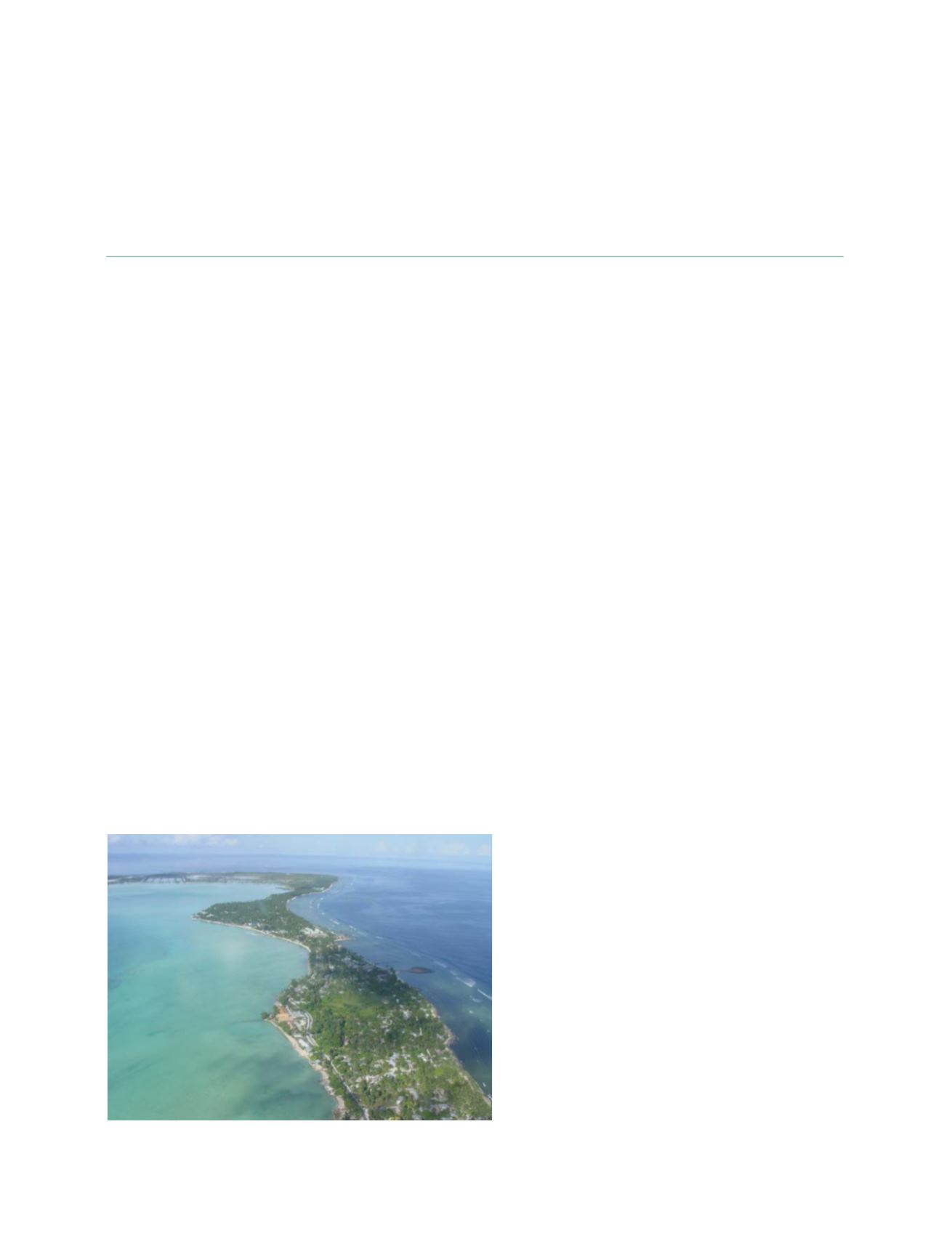

[
] 95
Observing systems for the Pacific Islands region
– unique challenges for a unique environment
Paul Eastwood, Marc Overmars, Cristelle Pratt, Komal Raman, Peter Sinclair, Llyod Smith,
Arthur Webb and Linda Yuen, Secretariat of the Pacific Islands Applied Geoscience Commission;
Dean Solofa, Secretariat of the Pacific Regional Environment Programme
T
he Pacific Ocean, the largest water body on Earth, covers
some 170 million square kilometres, spans climatic
extremes from the poles to the equator, and exerts a major
influence over global climate processes. Contained within the
western tropical zone of the Pacific lies the Pacific Islands
region, comprising some 20 small island developing states
(SIDS). Many of these are composed entirely of small islands,
some with combined total land areas of just a few tens of square
kilometres, yet these same countries can control vast ocean
Exclusive Economic Zones (EEZs) covering several million square
kilometres.
For centuries the Pacific Ocean has strongly influenced the lives of
the island communities scattered throughout the region, creating a
rich, diverse and unique array of island heritages. Dependence on
the resources of the Pacific, particularly the islands’ fringing reefs,
has underpinned subsistence lifestyles since humans first settled.
Throughout much of this period, Pacific communities have managed
to coexist in relative harmony with their environment. Indeed, some
of the last remaining examples of how humans can live in sustain-
able relationships with coral reef ecosystems still remain in the region
today. However, in more recent times pressures have increased as
development, swelling populations and rapidly growing urban
centres have resulted in previously unknown levels of
environmental stress.
As competition for limited resources has increased, so
have levels of vulnerability, particularly for the numer-
ous atoll and small island communities that dominate
the region. Pacific Island communities are also under
threat from the projected effects of climate warming,
which include an increased likelihood of coastal inun-
dations, extreme weather events, coral bleaching with
knock-on effects to reef fish resources and aquatic
ecosystem structure, and a reduction in freshwater
supply on small islands.
1,2
Given that many island
communities in the Pacific are reliant on coastal natural
resources through subsistence lifestyles, the threats
posed by global-scale climate change are a major cause
for concern.
In order to better understand the localised effects of
global climate change, manage resources in a sustain-
able manner and develop strategies for mitigating the
threat of environmental hazards, routine and compre-
hensive observations of the climate, seas, and freshwater
resources are needed. However, developing such obser-
vational capacity in the Pacific Islands region poses some
major logistical challenges, as most Pacific Island
nations lack the resources and technical infrastructure
to implement robust and sustained observation systems.
Improving observational capacity in the Pacific and
other regions of the world is one of the main drivers
behind the development of regional implementation
programmes of global observing systems, such as the
Global Ocean Observing System (GOOS), the Global
Climate Observing System (GCOS), and the World
Hydrological Cycle Observing System (WHYCOS).
All of these programmes have sub-components in the
Pacific Islands region, namely Pacific Islands GOOS (PI-
GOOS), Pacific Islands GCOS (PI-GCOS), and the
Pacific component of WHYCOS (Pacific HYCOS). The
central objective of all three of these regional
programmes is to address the observational needs and
unique capacity issues that exist among Pacific Island
nations, and in doing so improve observational capac-
ity and baseline information delivery at the national,
regional, and global level.
Photo: Marc Overmars
South Tarawa atoll, Kiribati
GEOSS C
OMPONENTS
– O
BSERVING
S
YSTEMS
















